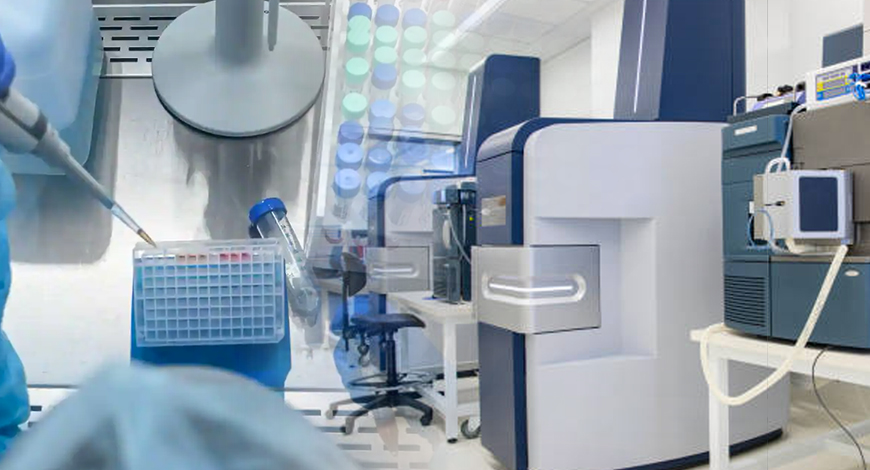Industry
Avoiding a PCR reagent crunch

Critical SARS-CoV-2 PCR based diagnostics have not been immune to the supply chain disruptions so common during the COVID-19 pandemic. It is imperative to switch to methods that can give rapid diagnostics and augment current methods available for diagnosis of SARS-CoV-2.
As severe acute respiratory syndrome coronavirus-2 (SARS-CoV-2) infections continue, there is a substantial need for cost-effective and large-scale testing that utilizes specimens that can be readily collected from both symptomatic and asymptomatic individuals in various community settings.
It is imperative to have methods that can give rapid diagnostics and augment current methods available for diagnosis of SARS-CoV-2.
At present, the RT-PCR test remains the gold standard for early diagnosis of SARS-CoV-2. Nevertheless, there is growing evidence demonstrating that this technique may generate false-negative results rates from respiratory samples for SARS-CoV-2 ranging from 1 percent to 30 percent.
These diagnostic errors are related to a number of preanalytical and analytical factors, including the source of the sample, delays or inadequate storage conditions before arrival to the laboratory, possible errors of RNA extractions, as well as the different quality and sensitivity of detection kits.
Additionally, insufficient viral load, the incubation period of the disease, and the presence of mutations that allow virus to escape from the detection may also lead to the risk of obtaining false-negative results.
 Rahul Jain
Rahul Jain
Professor & Dean,
NIPER
“The most widely used technique for the detecting SARC-CoV-2 is RT-PCR. The technique is widespread and compatible with the hospital and diagnostic testing centers. The major issue encountered in the use of RT-PCR technique is the reliability of the results and lack of adequately trained manpower. Recently, Doward et al. (ACS Infect. Dis., 2020, 3269) reported the first time use of high resolution MALDI mass spectroscopy in the detection of SARC-CoV-2. The use of HR mass spectroscopy technique relies on the detection of marker peptide fragments of the most abundant structural viral proteins obtained after the digestion of whole virus using specific proteolytic enzymes. The significance of this technique lies on the fact that use of HR-MS spectrometry would provide results with higher accuracy. This could be a revolutionary technique for faster and precise detection of not only SARC-CoV-2 but also several other viruses. However, infrastructural requirements such as availability of expensive HR mass spectrometers, trained mass spectroscopy technicians with clinical expertise could be a limiting factor in utilizing such a technique in the developing countries.”
Many problems have emerged in actual performance, ranging from sub-optimal sensitivity, especially as the virus mutates, to low throughput due to many intermediate steps and long reaction times. Additionally, specialized reagents are necessary for RT-PCR, which increases the cost of the test.
Apart from this, rapid antigen tests are also being extensively used in various countries for preliminary screening. These tests are based on the detection of antigens from the nasopharyngeal swab using antibodies. A positive test confirms the presence of the virus, but a negative test is inconclusive since the sensitivity of the antigen test is between 34 and 80 percent. Thus, a highly sensitive method is required to directly detect the virus from the nasopharyngeal swab to facilitate rapid screening.
A paper published in the Journal of Proteins and Proteomics by Praveen Singh, Rahul Chakraborty and Shantanu Sengupta reports a simple and rapid method, that using a multiple reaction monitoring can detect the presence of two peptides, QIAPGQTGK and AIVSTIQRKYK, specific to SARS-CoV-2 in a 2.3 min gradient run with 100 percent specificity and 90.5 percent sensitivity when compared to RT-PCR.
Using follow up samples of patients who have symptomatically recovered and also tested negative for RT-PCR analyses, their method reports that these peptides are present in these samples indicating the potential of asymptomatic diagnosis of COVID-19 in patients.
Importantly, these peptides could be detected even in the patients who have recovered from the symptoms and have tested negative for the virus by RT-PCR highlighting the sensitivity of the technique. This method has the translational potential of in terms of the rapid diagnostics of symptomatic and asymptomatic COVID-19 and can augment current methods available for diagnosis of SARS-CoV-2.
Another novel assay combining RT-PCR reaction together with high-throughput mass spectrometry processing on the MassARRAY® System (Agena Bioscience®, San Diego, CA, USA) has received the CE-IVD mark in Europe for the qualitative detection of SARSCoV-2 in upper respiratory specimens. The MassARRAY® SARS-CoV-2 Panel (Agena Bioscience, San Diego, CA, USA) utilizes a four-step process composed of a one-step RTPCR reaction to reverse transcribe viral RNA into cDNA followed by an amplification of the nucleic acid material, primer extension, and matrix-assisted laser desorption ionization time-of-flight mass spectrometry (MALDI-TOF MS) separation of the products on a matrixloaded silicon chip array.
It demonstrated a superior sensitivity of the MS-based assay in viral RNA detection.
At the Indian Institute of Science, Bengaluru, too scientists recently used mass spectrometry (MS) for the proteomic analysis — identification and quantification of the full set of proteins, or proteome, in a biological system such as a cell, tissue or organ — of the SARS-CoV-2 virus. “Proteins are more reliable markers of infections; they are more abundant and stable as compared with RNA molecules. Also, the results arrive much faster, and can be used at airports for instance. A nasal swab is taken when the passenger joins the security check queue and the results are out by the time the security check is completed. Also, because MS looks for peptides (short chains of proteins), it is more accurate than RT-PCR,” says Dr Utpal Tatu of the Department of Biotechnology, the lead scientist in the research.
Early diagnosis and isolation are key to contain the rapid spread of the virus. Mass testing is the need of the hour. At such a scale, it is critical to innovatively leverage existing infrastructure to build surge capacity and investigate low cost, high throughput methods.












